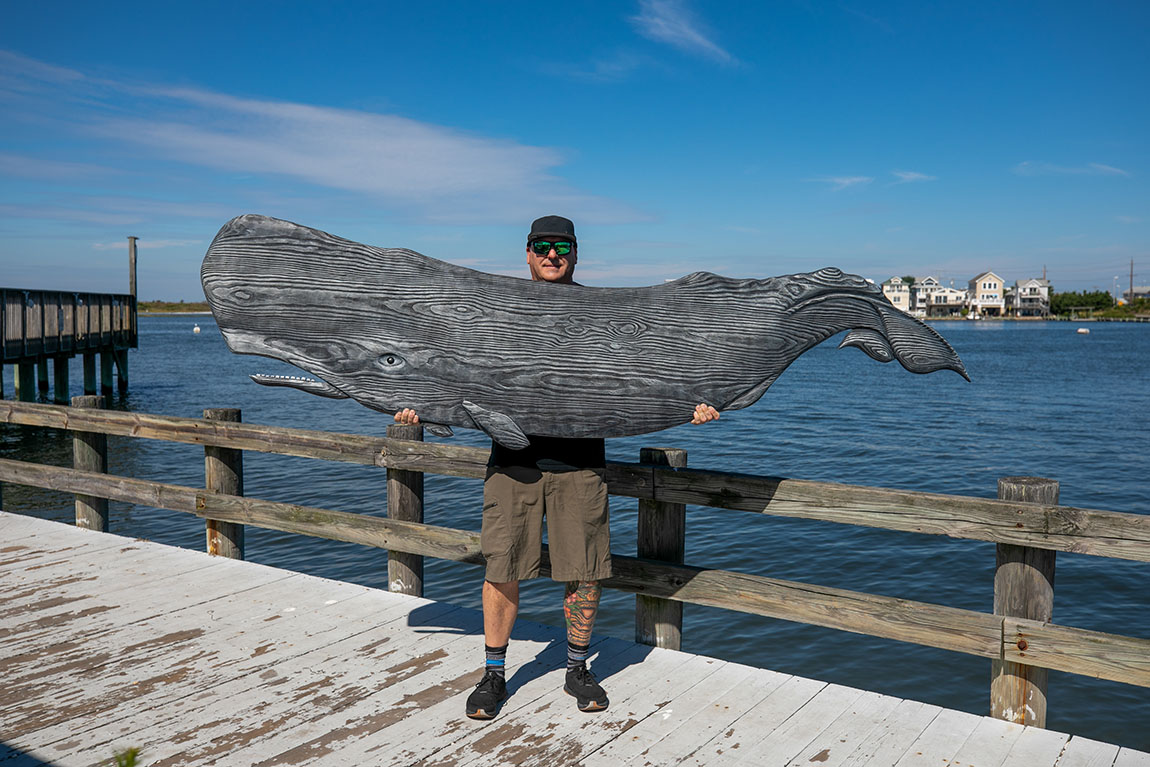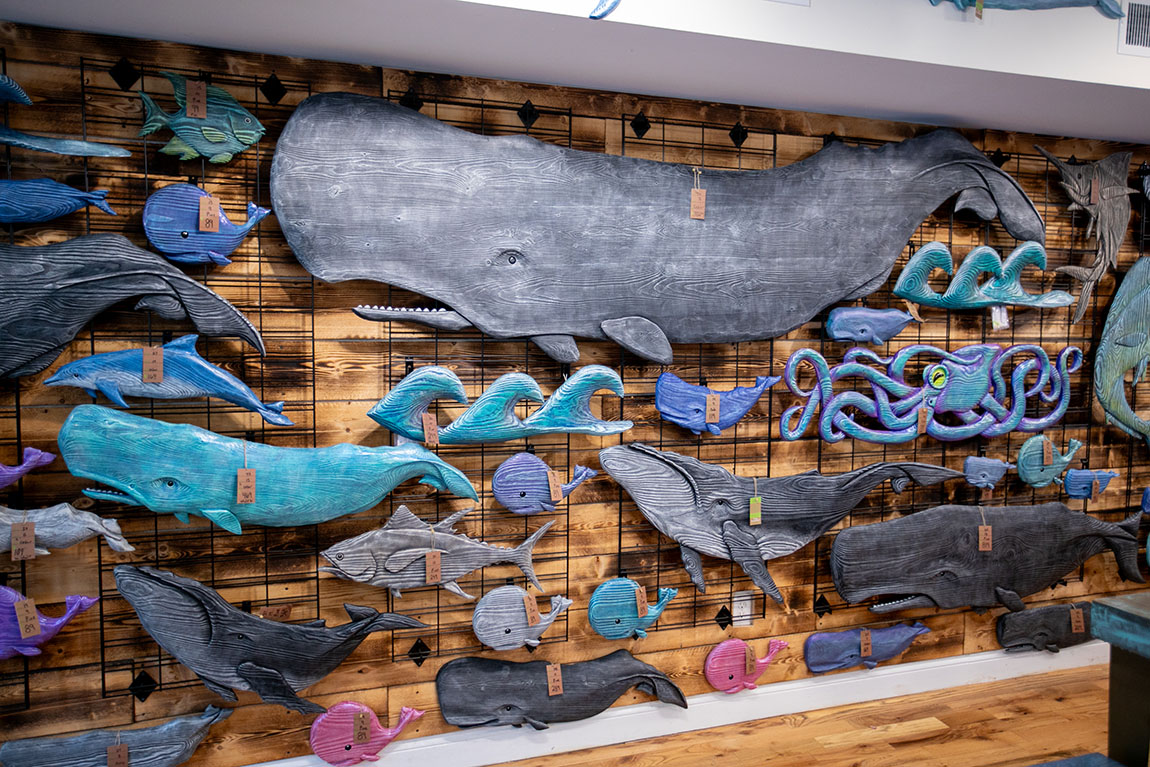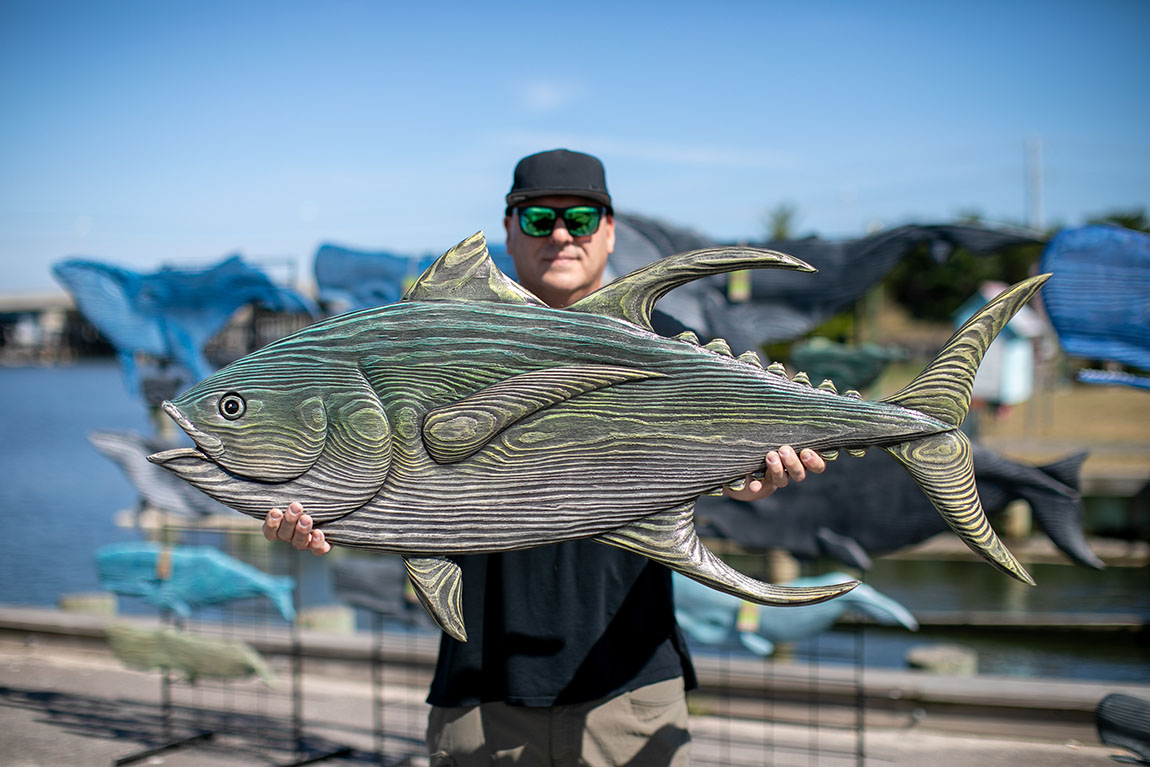Mark Grasso ’98 Has Had a Whale of a Career
Grasso, who was an art major at Muhlenberg, carves wooden sea creatures and sells them from his Asbury Park, New Jersey, storefront.By: Meghan Kita Friday, November 10, 2023 09:21 AM
 Mark Grasso ’98. Photos by Jack Reynolds
Mark Grasso ’98. Photos by Jack ReynoldsThis story originally appeared in the Fall 2023 issue of Muhlenberg Magazine. See the complete digital edition here.
Today, Mark Grasso ’98 describes the upheaval Hurricane Sandy brought to his life as a blessing, though it didn’t seem like one at the time. In 2012, he co-owned two surf shops in Long Beach Island, New Jersey, which was hit hard by the superstorm. He worried about how long it would take the area to recover enough for tourists to return. He also had a baby at home to support, so he got a corporate job and his business partner took over the shops. He desperately missed entrepreneurship, and after a few years of steady income, he was ready to return to that world. In 2019, Grasso, who was an art major at Muhlenberg, opened Rusty Anchor Trading, a shop that sells his own carvings, in Asbury Park, New Jersey. Find him on Instagram @rustyanchortrading.

Muhlenberg Magazine How did you get started with wood carvings?
Mark Grasso ’98 I’ve been a tiki nerd my entire life. When I owned the surf shops, I carved some tiki. I had another guy making tikis and I thought, “I can do this.” I picked up a chainsaw and just went after it. It’s backbreaking work. Witco [a company that made furniture and decor, including tikis, in the 1960s] inspired my current stuff. They pulled the grain out of the wood. I got back into carving right around 2018, and I had to figure out how to get that texture. Once I did, I carved 40 or 50 whales, and I sold them all. I thought, “I’ve got something here.” I live in Long Beach Island, but I put my shop up in Asbury because it has more year-round traffic and it’s a more artsy town.
MM How did you land on sea creatures?
MG They’re organic — anything organic, I can mess around with it. For a while, I was doing pop art. If I’m doing a South Park scene, for example, if you don’t make it look identical, you didn’t hit it at all. I do large Jaws scenes from the poster. That takes so long to do. With organic things, it’s a little more fluid.

MM Some of your pieces are huge — 10-foot whales, 8-foot octopuses. Why?
MG I usually try to put one large-scale work in my shop. That’s the one people take pictures of. That’s the one that makes people come and say, “What the hell is wrong with this person?” I’ve worked with designers and customers who send me pictures of a space and say, “How big do you think?” I’m never going to tell anyone to go small. It’s not about the money. It’s about the impact. A large-scale work, it just draws your eye. It’s a conversation piece.
MM How has your business grown and changed?
MG Since opening, I moved my location from basement-level to street-level. Right now, my store is 50 percent my carvings and 50 percent other stuff I sell, but I’m going to turn it into a gallery. Between the furniture I make and the carvings, that’s a good, workable niche. I don’t have competition now. I don’t have other people carving 10-foot whales. Any person who does art — photography, writing books, whatever it is — will tell you that you’re lucky when you get to sell stuff. It’s a good rush. Not many people get to do what they like every day. I don’t think I’m ever going to retire.
“Any person who does art — photography, writing books, whatever it is — will tell you that you’re lucky when you get to sell stuff. It’s a good rush. Not many people get to do what they like every day. I don’t think I’m ever going to retire.”
